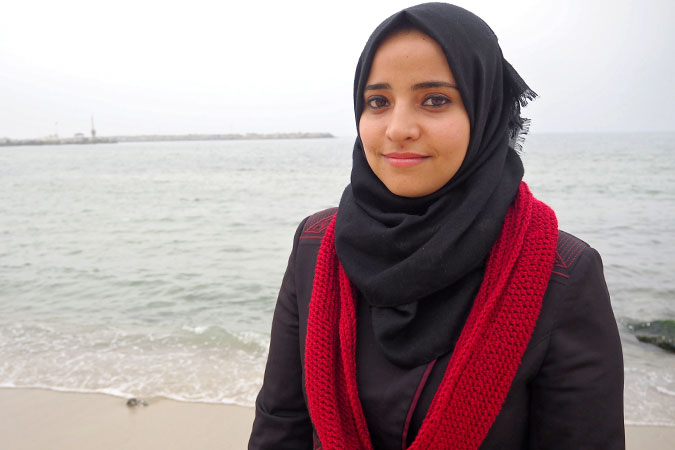From where I stand: “I learned to see beyond a physical space – and see what people needed”
Dalia Osama is a Palestinian female architect from Rafah City, Gaza Strip, who has redesigned and restored the only public garden in Al-Shoka neighbourhood, which was destroyed during 2014 conflict. The blueprint of the garden, completed by an active participation of community members, especially women and youth, is a symbol of civil engagement and innovative use of digital tools in the post-conflict recovery efforts in Gaza.Date:

When the conflict in Gaza broke in 2014, I was preparing for my graduation project. The project was to design a public space where people with disabilities could feel comfortable and empowered. For two weeks, my neighbourhood in Rafah was bombed. After the bombing stopped, my classmates and I resumed working on our project—and we managed to finish and graduate!
After graduation, I volunteered at the Rafah municipality for four months, providing suggestions for the blueprint of a public cafeteria next to the beach. I suggested that we include a playing area for kids and plant green grass, and include curves in the design. I thought that way, everyone, especially women and children, will feel comfortable using the space. I had no idea that all that I was learning would come together when I got the job to design a public garden in Al-Shoka, a conflict-impacted neighbourhood in Gaza.
For me, the best part of the job was that I received many interesting training sessions on gender issues, civic engagement, and digital tools throughout the project. These courses helped me become a better architect and to see beyond a physical space – and see what people really needed and how I could work with them to meet these needs through my design. Another fantastic part of the project was working with youth. They really inspired me with their creativity, ambition and technology skills. I got many good ideas from them while finalizing the blueprint of the public garden.
Being one of three female architects in the project also had its advantages—sometimes, we could make decisions that we understood would lead to a better outcome, and address the needs of the community. For example, originally, people suggested to put the bathrooms on the left side of the garden entrance, but eventually, we decided to place them on the right, because the light was better from that direction, making the bathrooms safer for women and girls.
My journey as a female architect has only just started. I am planning to do my Master’s degree in interior design from Turkey. After I get my degree, I will return to Gaza and design homes, restaurants, hospitals, schools, mosques, and other places where people can feel comfortable and welcomed. Although my family and the society prefer a working space where there’s no men, I don’t mind working with men and women in the same space. As long as it is designed for all, and safe for all, why should I worry about being a woman?”
Dalia Osama, 26, is one of three female architects at Al-Shoka neighbourhood in Rafah City, Gaza Strip, selected to redesign and restore the public garden in Al-Shoka as part of the UN Women and UN Habitat joint programme “Utilizing Digital Tools to Promote Human Rights and Create Inclusive Public Spaces in the Gaza Strip” (2017-2018). The programme, generously funded by the Government of the Kingdom of Belgium, aims at leveraging technology and meaningful participation of women and youth to create safe and inclusive public spaces. The programme also reaffirms the important role of women in post-conflict reconstruction, as framed in UN Security Council resolution 1325 and contributes to several Sustainable Development Goals (SDGs), including SDG 9, which aims to build resilient infrastructure, promote inclusive and sustainable industrialization and foster innovation, SDG 11, which aims to make cities and human settlements inclusive, safe, resilient and sustainable.